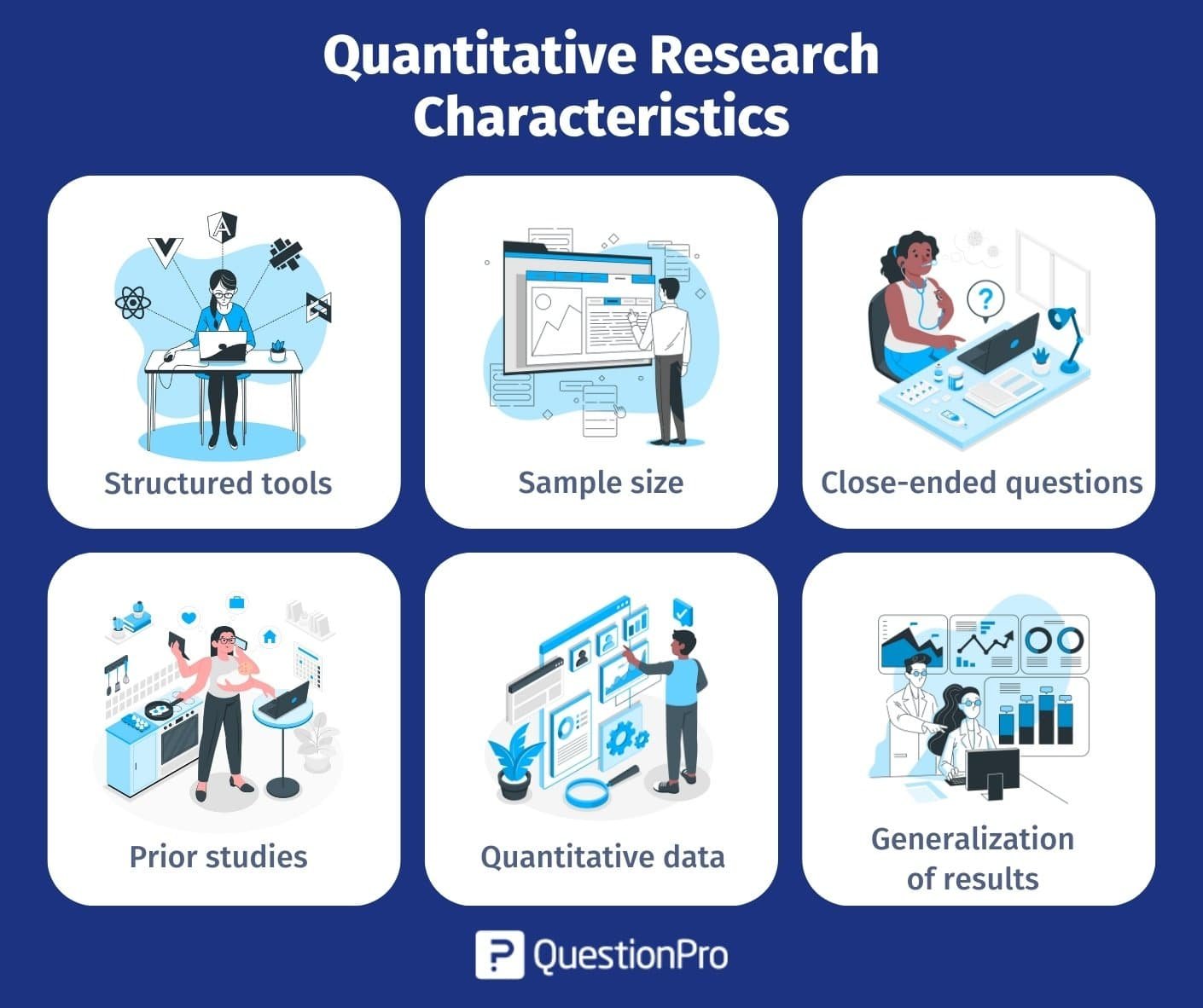In the ever-evolving digital business landscape, understanding customer behavior is paramount for businesses striving to thrive in competitive markets. Quantitative visitor research data provides concrete metrics and benchmarks, enabling companies to measure the effectiveness of their marketing efforts and make informed decisions to improve ROI.
Quantitative research is a distinct technique that should not be confused with qualitative research, even though the phrases are sometimes used interchangeably.

What is quantitative visitor research?
Quantitative visitor research involves collecting and analyzing numerical data about visitor behavior, interactions, and preferences on digital platforms such as mobile apps and websites. It offers a robust framework for interpreting the patterns of user engagement.
This type of research aims to provide objective insights into how users engage with digital products, allowing businesses to make data-driven decisions to optimize their online presence.
Importance of quantitative visitor research
Quantitative visitor research is crucial for businesses as it offers valuable insights into customer behavior, preferences, and pain points. By understanding these aspects, businesses can tailor their digital strategies to enhance user experience, increase conversions, and drive revenue growth. The following are some points that emphasize the importance:
Identifying emerging trends
Quantitative research can highlight shifts in consumer preferences, such as the growing interest in eco-friendly products or the rise of digital shopping habits.
Effective customer segmentation
Businesses can use quantitative data to categorize customers based on demographics, behaviors, or purchase history, allowing for tailored marketing campaigns like personalized email offers or targeted social media ads.
Uncovering hidden patterns
Analyzing quantitative data might reveal correlations between certain product features and customer satisfaction, prompting businesses to introduce or refine new features.
Benchmarking against competitors
Quantitative research enables companies to compare their market share, customer satisfaction scores, or pricing strategies with competitors, identifying areas for improvement or differentiation.
Optimizing resource allocation
By analyzing metrics like customer acquisition cost or ROI by marketing channel, businesses can allocate resources more efficiently, focusing on channels that yield the highest returns.
Facilitating continuous improvement
Utilizing a feedback loop, quantitative visitor research enables businesses to iteratively enhance their digital strategies over time based on data-driven insights and customer feedback, ensuring ongoing optimization and adaptation to changing market dynamics.
Research methods
Here are the top quantitative research methods:
Surveys and questionnaires
Surveys and questionnaires are indispensable tools for gathering data on customer satisfaction, market trends, employee feedback, and product preferences. For example, a company may conduct a survey to gauge customer satisfaction with their recent shopping experience.
Questions could cover aspects like product quality, service efficiency, and overall satisfaction, with respondents rating each on a scale. Analyzing the collected data allows the company to identify areas for improvement and make informed decisions to enhance customer experience and loyalty.
Experiments
Experiments can be crucial for testing hypotheses related to marketing strategies, product innovations, pricing models, or operational efficiency. For example, a retail chain might conduct an A/B test to assess the impact of different promotional strategies on sales.
Take a free trial to try A/B testing with VWO and explore its capabilities.
Observational studies
Observational studies play a vital role in understanding consumer behavior, market dynamics, and industry trends. For example, a chain of coffee shops conducts an observational study to understand customer behavior and preferences during peak hours.
Researchers observe customer interactions, queue lengths, order types, and waiting times at various locations during morning rush hours. By quantifying data such as the average time spent in line, popular menu items, and customer demographics, the company identifies opportunities to streamline operations, optimize staffing levels, and tailor promotional offerings to better meet customer demands. Insights gained from the observational study help the coffee chain enhance customer satisfaction and drive sales growth.
Challenges in quantitative visitor research
While quantitative visitor research offers substantial benefits, businesses often face challenges in data collection, analysis, and interpretation. Understanding and addressing these challenges are crucial for extracting meaningful insights.
Data accuracy and reliability
Ensuring the accuracy and reliability of collected data is a common challenge. Inaccurate or unreliable data can lead to flawed analyses and misguided conclusions. To address this challenge, businesses can implement advanced analytics tools, and integrate data validation techniques to significantly improve the reliability of collected data.
Privacy and ethical considerations
With increasing concerns about data privacy, businesses must navigate ethical considerations when collecting and utilizing customer data. Highlighting transparent data practices builds trust with customers.
Overcoming sample bias
Sample bias poses a significant challenge in quantitative visitor research, potentially skewing results and misrepresenting the broader audience. Bias may arise from various factors, such as demographic disparities, self-selection bias, or sampling errors. To mitigate sample bias, businesses can employ strategies such as randomization techniques, stratified sampling, and ensuring diverse participant representation.
Conclusion
In conclusion, quantitative visitor research stands as an indispensable tool in modern businesses navigating the digital landscape. It offers a systematic approach to understanding and interpreting numerical data regarding customer behavior and preferences across digital platforms.
By leveraging quantitative research methods such as surveys, experiments, and observational studies, businesses gain invaluable insights into emerging trends, effective customer segmentation, hidden patterns, and benchmarking against competitors.










